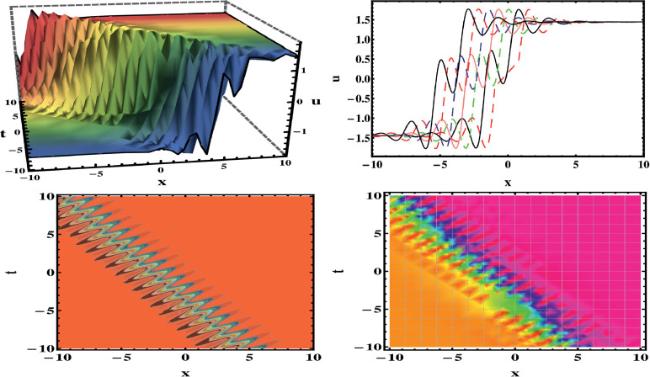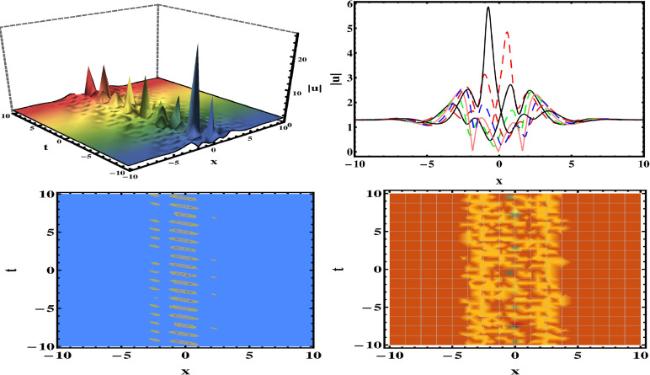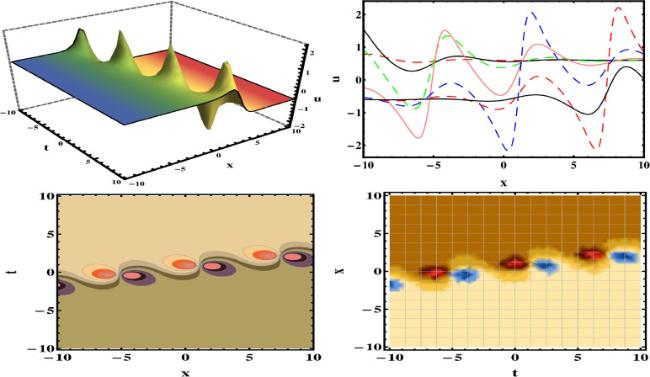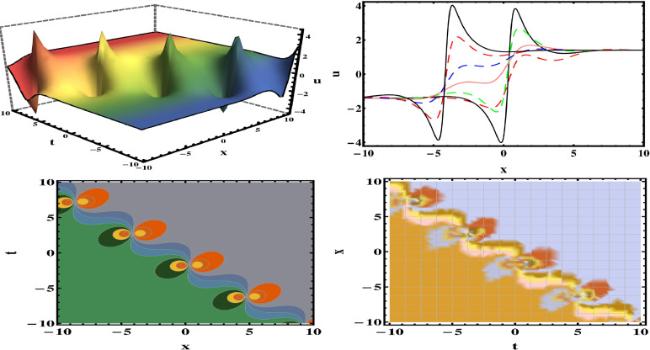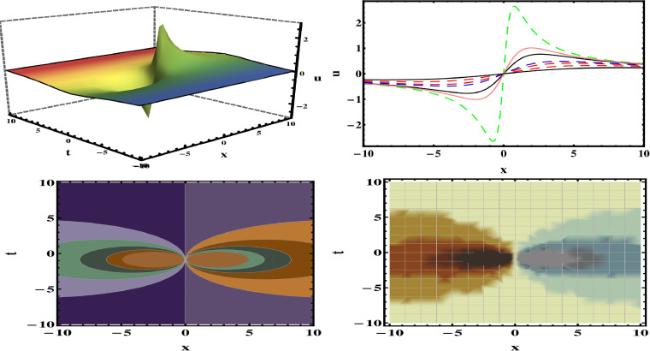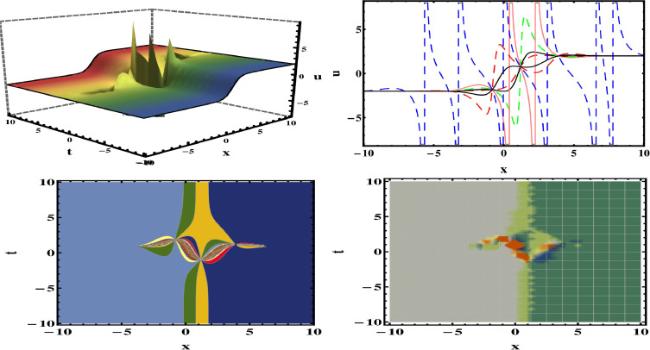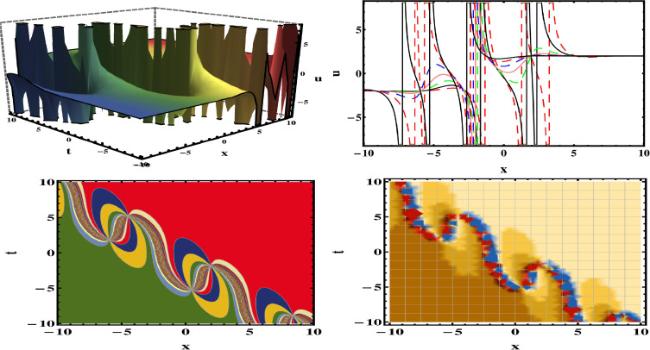This section establishes a connection between the updated work and the previous writing. Using the HBM, we have secured various wave structures, including breather, lump solutions, rouge, and two-wave solutions. Various experts have employed different methods to derive solutions to the studied equation. Particularly, In
[50], the lump solutions were extracted to the generalized Hietarinta- type equation, while in
[51], a variety of novel wavensolutions were secured to the generalized Hietarinta-type equation. Moreover, different wave structures for abundant solutions to (3+1)-dimensional nonlinear evolution equations are investigated by applying the strategy of the sine-Gordon expansion method
[52], while two models including third-order time-space dispersion term and describe the propagation of equally-width waves were studied by using new exponential-expansion algorithm
[53]. The exact solutions for the space-time fractional (2 + 1)- dimensional dispersive long wave equation and approximate long water wave equation were secured by using expansion function method
[54]. However, upon review and examination of the published literature, it is observed that our recovered results are novel and that the application of this method to the studied equation has apparently been overlooked. The graphical representation of the some of the obtained results are depicted in the figures (1, 2, 3, 4, 5, 6, 7, 8) under the selection of appropriate selection of parameters.


